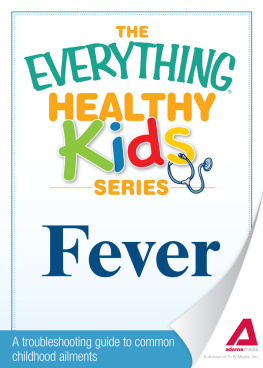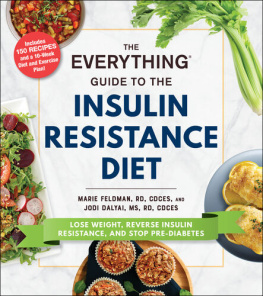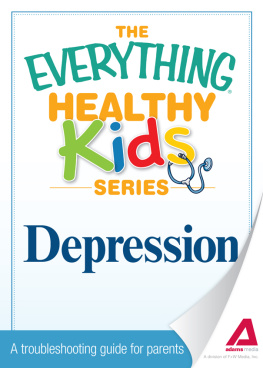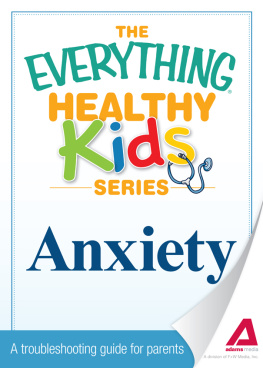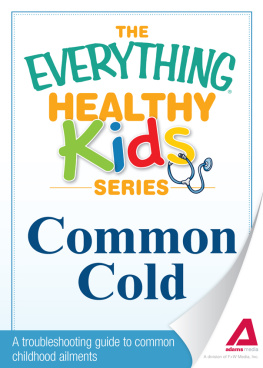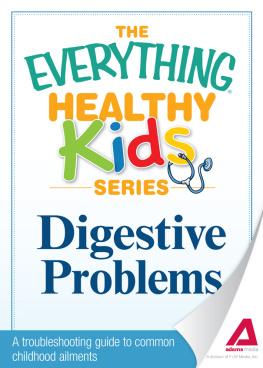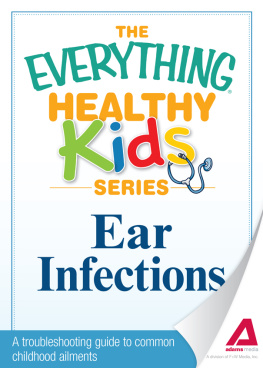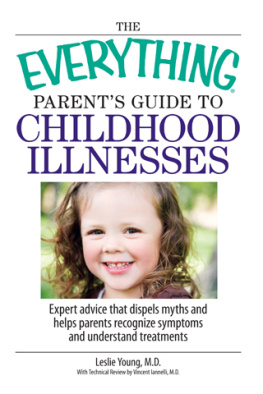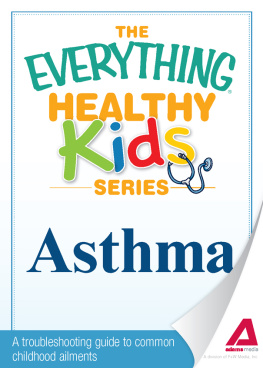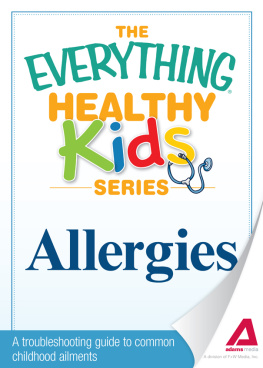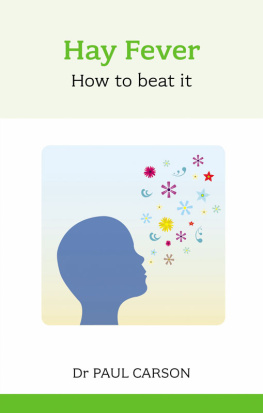The Everything Healthy Kids Series
Fever
A troubleshooting guide to common childhood ailments
Adams Media, a division of F+W Media, Inc.
Avon, Massachusetts
Contents
Introduction
For more than 10 years, millions of readers have trusted the bestselling Everything series for expert advice and important information on parenting and health topics ranging from pregnancy and postpartum care to asthma, dyslexia, and juvenile diabetes. Packed with the most recent, up-to-date data, Everything guides help you get the right diagnosis, choose the best doctor, and find the treatment options that work for your child.
The Everything Healthy Kids Series books are concise guides, focusing on only the essential information you need. Whether youre looking for information on how to treat ailments in children from infants to teenagers, advice on raising happy, well-adjusted kids, or suggestions for how to get your child to eat the right foods, theres an Everything Healthy Kids Book for you.
Childhood Illnesses
Few occasions provoke more anxiety in parents than when a child is ill, and it is the duty of the pediatrician to calm those parental fears in times of distress. The goal of the Everything Healthy Kids Series is not to discredit the ancient wisdom of parenthood. The innate instinct of parents often proves uncanny. Indeed, much of the knowledge that has been passed down through the generations has proved to be both practical and life saving. Everything Healthy Kids books are designed to supplement experience and instinct to empower parents with the latest, most accurate medical information. This allows you to make the best decision for your children when they are not feeling well.
While instinct and experience are often valuable, there are also numerous myths associated with childrens health. Though the origin of most of these misconceptions is obscure and lacking in supporting evidence, they tend to be tenaciously held by many parents. These guides will shed light on these areas of misunderstandings.
This book is not intended to serve as a comprehensive reference book concerning the care of your child. Rather, it is meant to complement medical source books such as those. A typical parent with children is likely to be too tired to read another comprehensive manual on how to raise children. Most parents are lucky to garner enough energy to make it through the day without collapsing. This is a book that you can read while your children are taking their afternoon naps. Not only does it provide an interesting read, it also educates you in a quick and easy format on how to better care for your loved ones.
Because this book is not written for medical professionals, no prior medical knowledge is required to read and understand the content. In fact, one of the aims of this book is to translate inaccessible information and make it available to every parent.
Lastly, this book was purposely designed to have a light tone and to be easy to read. Dealing with a sick child is stressful enough without having to wade through extensive medical jargon for a clear answer. This is definitely not a cut-and-dried medical textbook. At all times, the information is relevant to the reader and readily applicable to real-life situations.
As a universal reaction to a variety of conditions, fever is ubiquitous. It can often assist the body in the process of recovery. However, it is often a source of great anxiety for parents because they fear that the fever itself may cause harm to the child. This guide will show you the various causes for fever and how to manage them in specific situations. It will allay some of your concerns and allow you to make better decisions when your child has a fever.
If youd like to learn more about childhood illnesses, check out The Everything Parents Guide to Childhood Illnesses , available in print (978-1-59869-239-6) and eBook (978-1-60550-275-5) formats.
What Is a Fever?
Fever is one of the most common reasons for parents to bring their children in for a doctors visit. Parents tend to worry less about a headache, diarrhea, or even a fracture than a high fever. Regardless of cultural background or socioeconomic level, parents worry that their children might suffer brain damage caused by high temperature. However, virtually all doctors know that an elevated temperature induced by a viral infection never causes injury to the brain. Instead, it is the underlying infection that can sometimes damage the brain. As long as the fever is caused by a minor viral infection, it is unnecessary to obsessively worry about the high temperature itself. (However, any fever is potentially dangerous for children under the age of two months. A child of this age who experiences a fever should be taken to the pediatrician as soon as possible.)
What Causes Fever?
Fever is usually a normal response to a state of inflammation in the body. For children, the most common causes of fever are viral infections and minor bacterial infections, with viral infections causing the majority of fevers. This is a good thing, because the vast majority of children get better on their own without suffering long-term disabilities or complications.
Bodies generate a fever to shorten the duration of the infection. At an elevated temperature, the immune system works faster and more effectively. In short, the fever is created by the body and not by the invading viruses or germs. It makes inherent sense, then, that the body would not do something to harm itself. Therefore, under most circumstances fevers are harmless.
What Is Normal Body Temperature?
This sounds like a straightforward question that everyone should be able to answer, but many parents worry themselves sick about a slightly elevated temperature that may not be a fever at all. To understand fever, you must first understand the normal range of human body temperatures.
A lot of people believe any temperature that is higher than 98.6F is a fever. However, most medical professionals agree that a fever is any properly measured body temperature that is at or higher than 100.4F. Anything lower than that is not considered a fever at all. Even a fever of 100.4F or higher is considered a very slight temperature (or low-grade temperature, as doctors call it). A moderate temperature is one that is higher than 102.2F, and a high temperature is anything more than 104F.
A healthy childs body temperature fluctuates throughout the day. The bodys temperature tends to drop to its lowest in the middle of the night, and it rises to its peak in the late afternoon. In addition, the bodys temperature can be affected by a childs emotional state, activity level, and even environmental conditions. Not taking this variation into consideration when interpreting a temperature is a common mistake that many parents make.
Alert
Its not uncommon for parents to resort to desperate cooling measures in an attempt to reduce a childs body temperature. But some of these practices have been proven unsafe and can pose a serious health hazard to the child.
More importantly, the exact degree of the childs temperature is less significant than how long the fever lasts and how the child looks. Taking a childs temperature may clue you in as to whether your child has a fever, but it does not give you any clues about what might be causing the fever nor does it provide any information on the severity of the illness.

